Какова цена солнечной панели?
Взволнованные высокие затраты делают солнечную энергию.? Думайте, понимание цен на панели слишком сложно? Мы разбиваем затраты на солнечную батарею просто, показывая, насколько доступной зеленой энергией может быть для вас.
Цены на солнечные панели обычно варьируются от приблизительно $0.083 к $0.11 за ватт для самой панели, обычно вокруг $0.097 на ватт. Факторы, такие как бренд, эффективность, и количество сильно влияет на конечную стоимость. Понимание этого поможет вам увидеть реальную ценность и потенциальную экономию с солнечной энергией.
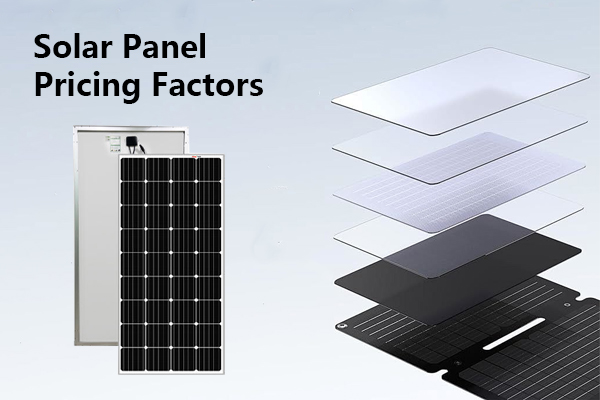
Эта цена за ватт дает базовую линию, Но, может быть, вам интересно с конкретными сценариями. Давайте углубимся в некоторые общие вопросы, которые я слышу все время здесь, в Gycx Solar, чтобы прояснить вещи дальше. Держись со мной, И давайте сделаем солнечные цены простыми вместе.
Сколько стоит 1 панель солнечной батареи?
Думать о том, чтобы начать с малого или просто любопытного о основной стоимости единицы? Давайте посмотрим, что может стоить единственная солнечная панель напрямую, Может быть, если вы думали о небольшом проекте или замене.
Одна солнечная панель жилой панели (обычно 350-450 ватты) может стоить между приблизительно $29 и $50 только для панели. Помнить, Это исключает установку, инвертор, и другие части системы. Объемные покупки значительно ниже этой цены на панель.
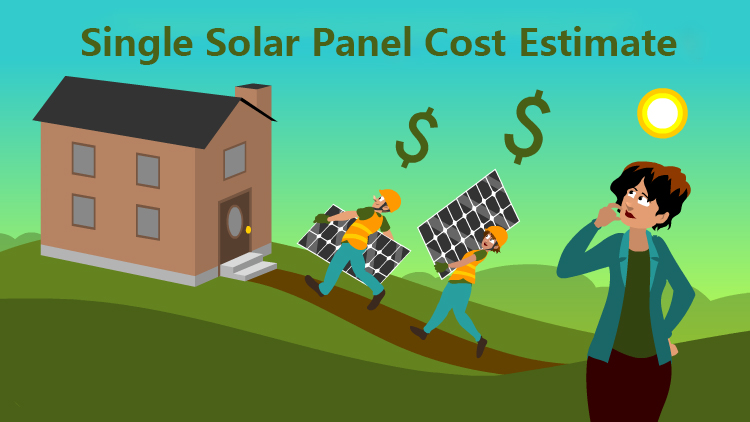
Когда мы говорим о ценах на солнечные панели, Наиболее распространенный способ, которым профессионалы обсуждают, это «стоимость за ватт" ($/Вт). Это помогает сравнить панели с различными выходами.. Если 400-ваттная панель стоит $38.80, его стоимость за ватт $38.80 / 400W = 0,097 долл. США/Вт. Мы находим этот показатель очень полезным при разработке систем для наших клиентов, от домовладельцев до крупных промышленных партнеров, Как подчеркивает основное значение.
Понимание стоимости за ватт ($/Вт)
Использование стоимости за ватт помогает сравнить яблоки с яблоками. Панель с более высокой мощностью может иметь более высокую общую цену, Но его стоимость за ватт может быть ниже, сделать это лучше. Например, на раннем этапе 2025, Мы видим качественные панели, часто падающие в $0.083 к $0.11 за ватт диапазон (Обычно около 0,097 долл. США/Вт), Но это изменяется на основе рынка и конкретных факторов импорта для вашего региона.
Что определяет цену одной панели?
Несколько вещей влияют на цену только одной панели, Даже с этой новой базовой линейкой:
- Мощность: Панели более высокой мощности обычно стоят дороже в целом, Хотя стоимость за ватт может быть одинаковой или даже лучше.
- Бренд: Установленный уровень 1 Бренды, такие как Longi, Джинко Солар, или JA Solar, который мы с гордостью поставляем, может быть немного другая ценовая точка, отражающая их качество, надежность, и банковство. Их передовые технологии часто оправдывают любую небольшую премию.
- Где вы его покупаете: Покупка одной панели у ритейлера будет стоить больше за единицу, чем покупка оптом непосредственно у дистрибьютора, как мы. Это особенно верно для наших оптовых партнеров или крупных коммунальных проектов, где покупка объема резко влияет на цену.
- Технологии & Эффективность: Более продвинутый, Панели с более высокой эффективностью обычно стоят дороже за штуку, Но их $/w все еще может быть конкурентоспособным и обеспечить лучшую стоимость жизни.
- Логистика и затраты на импорт: Помните, что на цены базовых панелей могут быть затронуты доставка, импортные пошлины, и местные затраты на распределение в зависимости от вашего конкретного местоположения.
Крайне важно помнить, что эта цена только Для оборудования панели. Общая стоимость работы солнечной энергии включает в себя установку рабочей силы, монтажное оборудование, инверторы (Как и те, что мы предлагаем), проводка, разрешения, а иногда батареи.
| Особенность | Типичный диапазон | Пример расчета (400W Панель) | Примечание |
|---|---|---|---|
| Мощность (Вт) | 350W - 450 Вт+ | 400 Вт | Более высокая мощность = больше мощности на панель |
| Стоимость за ватт | ~ $ 0,083 - $0.11 / Вт | $0.097 / Вт (общий) | Варьируется от бренда, количество, эффективность, расположение |
| Стоимость одиночной панели | ~ $ 29 - $50+ | *400Вт $0.097/Вт = $38.80** | Только панельное оборудование (базовая цена) |
Сколько 1 Стоимость одиночной солнечной панели?
Кажется таким же вопросом, верно? Я много понимаю. Но давайте уточним это - какие факторы Действительно управлять изменением цены даже для одной конкретной модели панели, Теперь, когда мы знаем, что базовая стоимость за ватт настолько конкурентоспособна?
За пределами мощности (около 0,083-0,11 долл. США/Вт), Конкретная стоимость одной панели зависит от его технологии (как Perc или Bifacial), рейтинг эффективности, репутация бренда (Уровень 1 против других), и гарантия предложена. Более высокая технология часто означает немного более высокую затраты на аванс, но может обеспечить лучшую стоимость срока службы и выход.
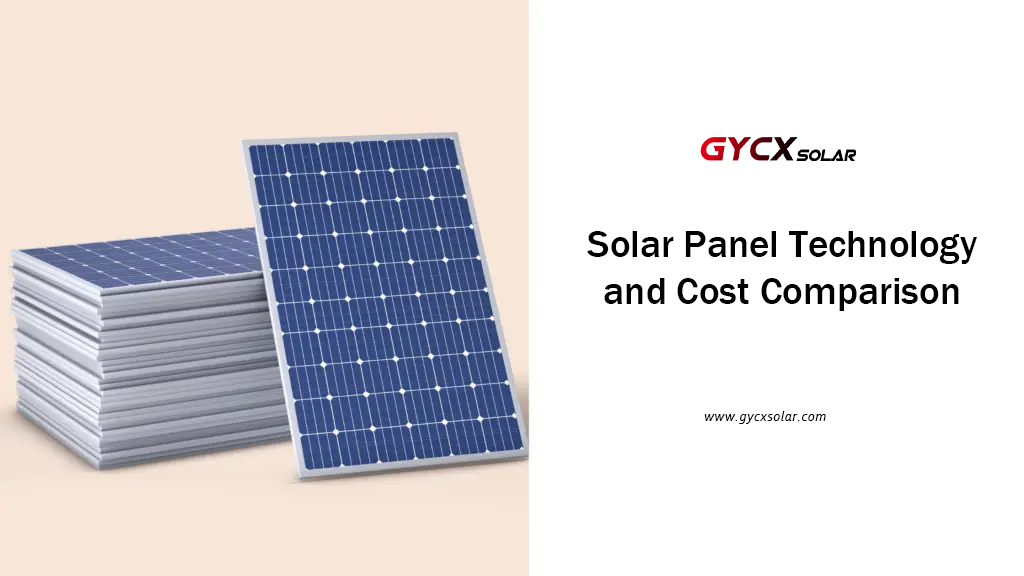
Когда вы посмотрите ближе по спецификациям панели, Вы увидите различия, которые влияют на цену. Это как сравнивать различные модели автомобилей - все они едут, Но функции и производительность варьируются. В GYCX Solar, Мы помогаем клиентам ориентироваться в этом выборе, чтобы найти наилучшую ценность для их конкретных потребностей.
Технология имеет значение: Мононуклеоз, Поли, ВЕРС, и еще
- Монокристаллический против. Поликристаллический: Моно панели (обычно черный) обычно более эффективны и стали доминирующей технологией, Обычно предпочтительнее поли -панелей (Обычно синий) Для большинства новых установок.
- ВЕРС (Пассивированный излучатель и задняя ячейка): Эта общая технология повышает эффективность для моно -панелей.
- Двухдневный: Эти панели могут запечатлеть солнечный свет с обеих сторон, Увеличение вывода, Особенно при установке над отражающими поверхностями. У них могут быть немного более высокие затраты, но могут дать больше энергии.
- Другая технология: Новые технологии, такие как HJT или Topcon, предлагают еще более высокую эффективность, но поступают по цене премиум -класса, Обычно выбирается для проектов, где максимальная выход из ограниченного пространства имеет решающее значение.
Эффективность и бренд: Оплата за производительность
- Эффективность: Рейтинг эффективности панели сообщает вам, сколько солнечного света он превращается в электричество. Более высокая эффективность (НАПРИМЕР., 21-23%+) означает большую мощность от того же физического размера. Эта более высокая производительность может повлиять на стоимость панели.
- Бренд & Уровень: Уровень 1 Производители, такие как Лонги, Джинко, и JA Solar имеет сильную репутацию для контроля качества, финансовая стабильность (важно для гарантийной достоверности), и проверенная производительность. Мы сосредоточены на этих брендах, потому что надежность часто того стоит, особенно для коммерческих клиентов, нуждающихся в долгосрочной перспективе, надежное производство энергии.
- Гарантия: Панели поставляются с двумя основными гарантиями: гарантия на продукт (покрытие дефектов, НАПРИМЕР., 12-25 годы) и гарантия на производительность (гарантирование определенного уровня вывода со временем, НАПРИМЕР., 85-90% после 25 годы). дольше, Более комплексные гарантии могут повлиять на первоначальную стоимость панели, но обеспечить большее душевное спокойствие.
| Фактор | Как это влияет на цену | Почему это важно | Типичный выбор для |
|---|---|---|---|
| Технологии | Моно/по стандарту; Bifacial/HJT немного больше | Эффективность, производительность в разных условиях | Большинство новых установок используют моно/perc |
| Эффективность | Выше % = Более высокая стоимость панели | Больше мощности на квадратный метр | Крыши с ограниченными пространством, С&Я roi |
| Уровень бренда | Уровень 1 могут иметь вариации | Надежность, гарантия, банковство | Все пользователи, которые ценят качество, особенно c&Я/утилита |
| Гарантия | Дольше/лучше = более высокая стоимость панели | Долгосрочная защита и гарантия производительности | Все пользователи ищут душевного спокойствия |
Насколько велика 20 солнечные панели?
Планирование большей системы для вашего дома, бизнес, Или, может быть, даже небольшой общественный проект? Интересно о том, что нужно на крыше или земле? Давайте визуализируем что 20 Панели выглядят как.
Двадцать типичных жилых солнечных батарей (каждый ок. 1.75м х 1,1 м) охватывал бы 38 квадратные метры (вокруг 410 квадратные футы). Этот массив может представлять собой общее количество мощность1 от 7 кВт до 9 кВт, в зависимости от мощности панели.
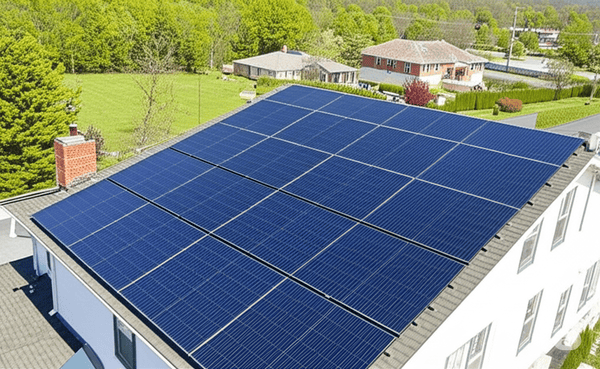
Понимание физического размера и выходной мощности является ключевым при планировании любой солнечной установки. Будь то для большой жилой крыши, Коммерческое здание, или даже установленные на земле системы, которые могут разработать наши коммунальные партнеры, Пространство является основным соображением.
Расчет следа: Область необходима
Общий жилой солнечная панель размер примерно 1.75 метры длиной мимо 1.1 метры шириной (Это о 5.7 ноги за 3.6 ноги). Некоторые панели, особенно те для коммерческого использования, может быть больше.
Давайте рассчитаем область для 20 панели с использованием этого типичного размера:
- Площадь на панель = 1.75 м * 1.1 m = 1.925 квадратные метры (приблизительно. 20.7 кв)
- Общая площадь для 20 панели = 20 * 1.925 SQ M = 38.5 квадратные метры (приблизительно. 414 кв)
Это размером с гараж на две машины. Вам также необходимо учесть небольшие пробелы между панелями и потенциальными требованиями к неудаче с края крыши. Общий вес также важен - 20 Панели могут взвесить 400-500 кг (880-1100 фунт), Итак, оценка потребностей в структуре крыши.
Выходная мощность: Что 20 Панели генерируют
Выход энергии зависит от мощности каждой панели. Давайте использовать общую мощность:
- При использовании панелей 350 Вт: 20 * 350W = 7000 Вт = 7 кВт
- При использовании панелей 450 Вт: 20 * 450W = 9000 Вт = 9 кВт
Так, Система с 20 панелями обычно падает в диапазоне 7 кВт до 9 кВт. Это общий размер для более крупных домов или малых предприятий, стремящихся значительно компенсировать их потребление электроэнергии. Для наших клиентов по коммунальным услугам, 20 Панели крошечные, Но принцип расчета площади и мощности масштабируется для их многомегаваттных проектов.
| Количество панелей | Примерно. Размер на панель (м) | Примерно. Размер на панель (футов) | Общая площадь (кв) | Общая площадь (кв) | Общая мощность (@400 Вт/панель) |
|---|---|---|---|---|---|
| 20 | 1.75 Икс 1.1 | 5.7 Икс 3.6 | ~ 38,5 | ~ 414 | 8,000 Вт (8 кВт) |
Может 12 Солнечные панели питают дом?
Мечтайте о энергетической независимости или, возможно, просто откусить счета за электроэнергию с помощью стартовой системы? Общий вопрос, который я слышал, заключается в том, достаточно ли относительно скромной 12-панельной установки для типичного дома.
Двенадцать панелей (приблизительно. 4.2кВт - 5,4 кВт размер системы) может покрыть значительную часть, или даже все, меньшего, Энергоэффективные потребности в электроэнергетике дома, Особенно в солнечных районах. Однако, это сильно зависит от вашего конкретного использования энергии, Панель мощности, и ваше местоположение.
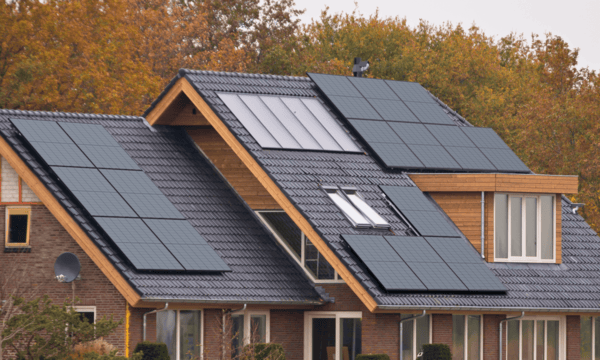
Давать простой да или нет сложно, потому что каждый дом и образ жизни разные. Но мы можем сломать факторы, чтобы увидеть, если 12 Панели имеют смысл для вас. Все дело в том, чтобы соответствовать производству системы с потреблением вашего дома.
Оценка ваших потребностей против. Вывод панели
Первый, Сколько энергии генерирует система из 12 панелей?
Предполагая 400 Вт панели (Популярный выбор): 12 панели * 400W/panel = 4800W = 4.8 KW Системный размер.
Следующий, Сколько энергии может производить эту систему? Это сильно зависит от солнечного света. Давайте воспользуемся в среднем 4.5 Пиковые солнечные часы в день (распространено во многих частях США, но географически варьируется):Расчетное ежедневное производство = 4.8 кВт * 4.5 часы = 21.6 кВтч
Расчетное ежемесячное производство = 21.6 кВтч/день * 30 Дни/месяц = 648 кВтч
Сейчас, Сравните это с средним использованием. Средний уровень США использует около 886 кВтч в месяц. Так, В этом сценарии, 12-панель (4.8кВт) Система могла бы покрыть 73% (648 / 886) среднего потребления. Для меньшего дома или с более низким использованием, это может покрыть 100% или больше!Ключевые факторы: Расположение, Использование, и тип системы
Ваше энергопотребление: Самый большой фактор! Проверьте свои счета за электроэнергию, чтобы увидеть ваше фактическое использование ежемесячного кВтч.. Энергетический аудит также может помочь в первую очередь выявить способы снижения потребления.
Расположение & Солнечный свет: Мы разрабатываем системы на основе локальных данных солнечного облучения.
Выбор панели: Использование панелей более высокой мощности (НАПРИМЕР., 450Вт) увеличит выход: 12 * 450Вт = 5.4 система кВт, генерирование потенциально ~ 730 кВтч/месяц в тех же условиях.
Тип системы: Вы связаны с сетью (наиболее распространенный, использует сетку в качестве резервной копии, может предложить чистые кредиты измерения) или вне сети (Требуются батареи, Обычно необходима более крупная система)? Системы вне сети нуждаются в тщательном размере, чтобы встретиться 100% потребностей плюс аккумулятор.
| Фактор | Подробности | Влияние на 12 Панели питают дом |
|---|---|---|
| Размер системы | 12 панели * (350W-450W) = 4,2 кВт - 5,4 кВт | Определяет потенциальную генерацию |
| Солнечные часы | Варьируется по местоположению (НАПРИМЕР., 3-6 Средние часы/день) | Непосредственно масштабирует выход энергии |
| Ав. Ежемесячное использование | ~ 886 кВтч (US AVG), Но проверьте свои счета! | Целевое поколение должно соответствовать/превышать |
| Эффективность | Более высокие панели эффективности = больше кВтч от 12 панели | Улучшает выход из ограниченного пространства |
| Тип системы | Связанная сетка часто достаточно; Вне сети нуждается в более тщательном размере + батарейки | Определяет уровень независимости энергии |
Так, может 12 Панели питает дом? Может быть! Лучше всего получить персонализированную оценку на основе вашей конкретной ситуации.
Заключение
Понимание цен на солнечные панели включает в себя заглядывание за пределы одного числа. Рассмотрим базовую стоимость за ватт, технологии, бренд, эффективность, и как размер связан с вашими потребностями в энергии. С надеждой, Это показывает, насколько доступны сами панели!
Готов изучить конкретные затраты и решения для твой дом, бизнес, или проект, в том числе то, как эти базовые цены приводят к вашей конкретной ситуации? Мы в Gycx Solar здесь, чтобы помочь с индивидуальным руководством. Обратитесь к нам для запроса!
Понять концепцию способности лучше понять ваши потребности. ↩
